
-
Find the right food for your petTake this quiz to see which food may be the best for your furry friend.Find the right food for your petTake this quiz to see which food may be the best for your furry friend.Featured products
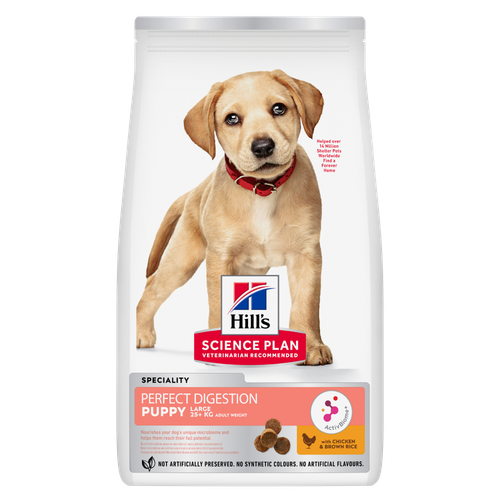 Perfect Digestion Large Breed Puppy Food
Perfect Digestion Large Breed Puppy FoodPrecisely balanced nutrition with Hill's ActivBiome+ prebiotic blend actively contributes to supporting digestive health and overall wellbeing to help your pet feel their best
Shop Now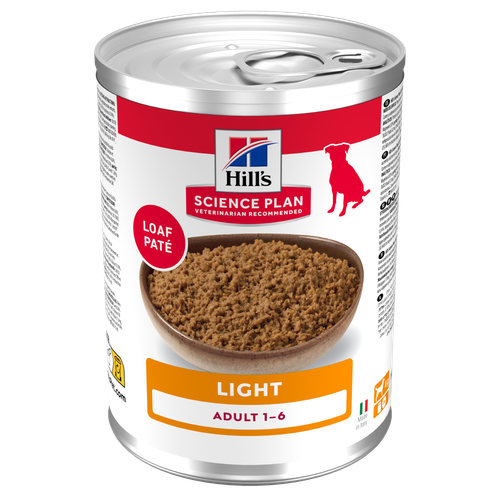 Adult Light Dog Food
Adult Light Dog FoodHill's Science Plan Light Adult Wet Dog Food is a complete premium pet food for adult dogs that tend to gain weight easily. This deliciously smooth loaf is formulated to deliver the appropriate amount of energy to support weight maintenance in adult dogs.
Shop Now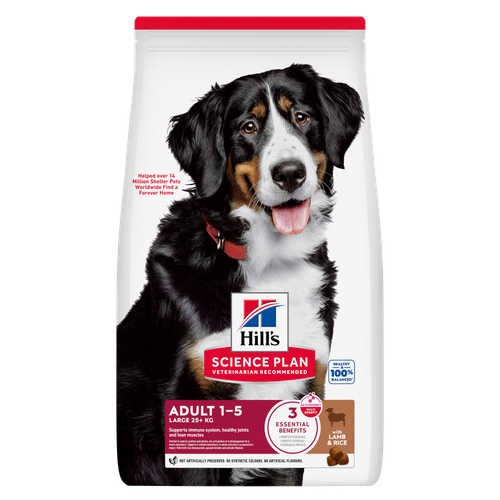 Large Breed Adult Dog Food
Large Breed Adult Dog FoodHill's Science Plan Large Breed Adult Dog Food with Lamb & Rice is a complete pet food, specially formulated with ActivBiome+ Multi-Benefit Technology.
This food is specifically designed to fuel the energy needs of large breed dogs during the prime of their life.Shop NowFeatured products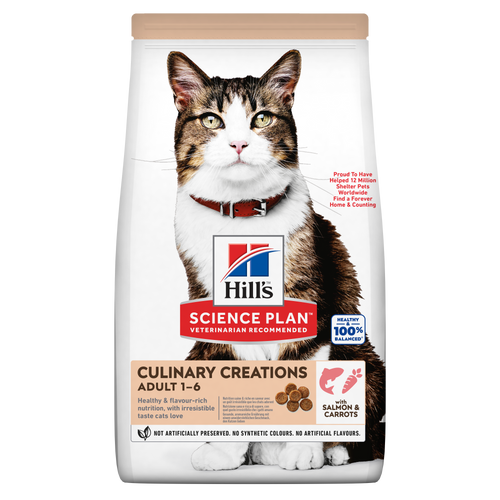 CULINARY CREATIONS ADULT CAT FOOD
CULINARY CREATIONS ADULT CAT FOODHill's Science Plan CULINARY CREATIONS Adult cat food with Salmon & Carrots was formulated to provide a great-tasting experience to cats. Its delicious flavour and texture are combine with essential nutrients to support cats' optimal health during the prime time of their life. Specially formulated with high-quality salmon protein, essential taurine for heart health & balanced minerals to support kidneys & bladder.
Shop Now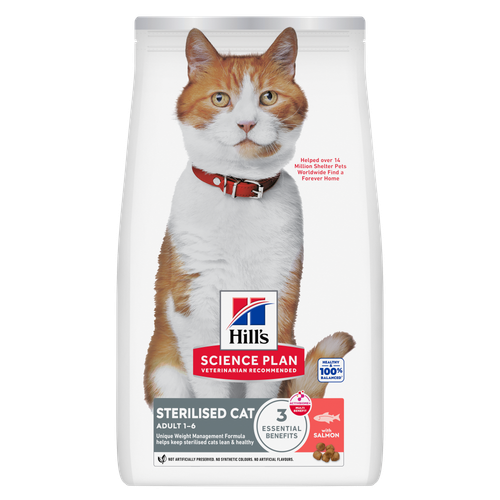 Sterilised Adult Cat Food
Sterilised Adult Cat FoodHill's Science Plan Adult Sterilised Cat Dry Food with Salmon is specially formulated with ActivBiome+ Multi-Benefit Technology. It is a precisely balanced nutrition, tailored to meet the needs of sterilised cats, to help keep sthem lean & healthy.
Shop Now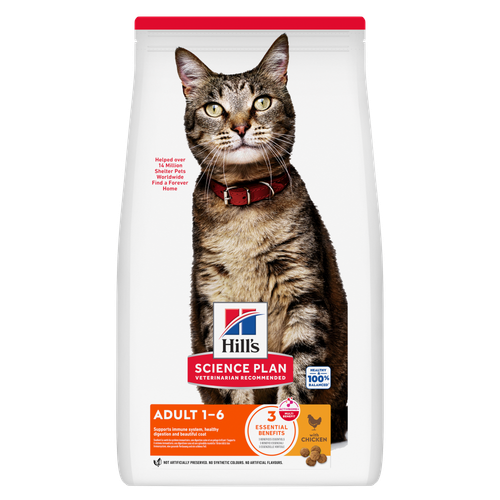 Adult Cat Food
Adult Cat FoodHill's Science Plan Adult Cat Food with Chicken is a complete pet food, specially formulated with ActivBiome+ Multi-Benefit Technology.
This food is specially formulated to fuel the energy needs of cats during the prime of their life.Shop Now -
Dog
- Dog Tips & Articles
-
Health Category
- Weight
- Food & Environmental Sensitivities
- Urinary
- Digestive
- Joint
- Kidney
-
Life Stage
- Puppy Nutrition
- Adult Nutrition
- Senior Nutrition
Cat- Cat Tips & Articles
-
Health Category
- Weight
- Skin & Food Sensitivities
- Urinary
- Digestive
- Kidney
-
Life Stage
- Kitten Nutrition
- Adult Nutrition
Featured articles Microchipping: The Facts | Hill's Pet
Microchipping: The Facts | Hill's PetThe government has announced that as of April 2016, all dogs in the UK must be microchipped by law.
Read More The Incredible Science Behind Your Pet's Microbiome
The Incredible Science Behind Your Pet's MicrobiomeLearn what your pet's microbiome is, how it contributes to your pet's gut and overall health, and why nutrition is important in maintaining healthy microbiomes.
Read More Pet Nutrition: What Makes "Healthy" Pet Food Healthy? | Hill's Pet
Pet Nutrition: What Makes "Healthy" Pet Food Healthy? | Hill's PetIn people, the right diet is very important. If you are eating the wrong way for your metabolism, activity level, age and lifestyle you could end up with health issues.
Read More -


If you're not planning to breed from your dog then it's best to have her spayed. If, however, you make the big decision to allow her to have puppies you're in for quite an adventure - here are a few signs that indicate pregnancy in dogs.
Your dog's teats will become swollen and more prominent 25 -30 days into the pregnancy. She also will start producing a vaginal discharge about one month after mating. You will usually notice her stomach swelling as she puts on weight 45-50 days after conception. Some dogs will also demonstrate a loss of appetite or signs of depression during gestation (pregnancy).
A trip the vet
If you think your dog is pregnant you need to take her to the vet. This is both to confirm the pregnancy and to catch any complications that may arise early.
Your veterinarian will use a number of different methods to determine if your dog is pregnant. After 21-25 days your veterinarian can perform a test for relaxin, a hormone produced only by pregnant dogs. This method will confirm pregnancy but not the number of pups.
By feeling your dog's abdomen after 21 days, your vet may detect a thickening of the uterus and the presence of 'bumps' which indicate pregnancy. However a number of things can interfere with this method: an overweight dog, a single puppy or even just nervousness can make it difficult to administer a proper 'feel'.
A stethoscope or ECG can detect puppy heartbeats after twenty-five days but will probably not be able to distinguish individual heartbeats making it a poor tool to determine how many puppies there are.
A common pregnancy assessment is with an ultrasound. This is non-invasive, reliable and can detect puppies at about 28 days.
The most accurate method of counting puppies is with an x-ray, which can detect skeletons after 49 days. Some vets will advise against performing an x-ray to avoid exposing the developing puppies to radiation.
Preparing for a new litter
In the months leading up to the birth there is not a lot you need to do for your expecting mother besides ensuring she continues to receive a good, healthy diet. You should encourage her to exercise so she's in good shape for what could be a long and drawn out birth.
In the days before your dog gives birth she'll probably start becoming restless and scratching at the ground or in her bed. She's looking to make a nest for the delivery. You should provide her with an enclosure, ideally this should be something she will be able to come and go from, but confine the puppies.


Tasty Tips
A cardboard box of an appropriate size for your dog will do or you might consider a small children's paddling pool. Fill the "nest" with towels, blankets or old sheets. Don't use anything you're hoping to use again though, as giving birth tends to be a messy business.
If you know the day of conception your vet should be able to calculate a due date. Another way is to monitor the mother's temperature when you think she's getting close to giving birth. A dog's temperature is usually around 38.4 degrees. Her temperature will drop to below 37.8 degrees just before birth.
Is my dog going into labor?
The signs of imminent birth are restlessness, frequent need to urinate, panting and digging in her "nest". Usually there will be a dark green discharge from the vagina. This means the placenta has detached and the mother is ready to give birth. If the discharge appears and your dog has still not had puppies after a few hours, contact your vet for help.
A mother dog can usually handle a birth completely on her own. She'll deliver the puppies, take them out of the amniotic membrane, chew off the umbilical cord and begin to clean them up.
A helping hand
If the new mother doesn't seem to know what to do, is exhausted or is in the midst of delivering another puppy, there are a few things you can do. If the puppy isn't already out, remove him from the membrane it's encased in.
If you need to sever the umbilical cord, take a piece of sturdy thread and tie it tightly around the cord about an inch away from the puppy's body. Tie another tight loop a little further down from the first loop then cut the cord with a pair of clean scissors.
Pinch the skin on the back of the puppy's neck and try to get him to cry out. Crying out will clear the fluid from the puppy's airways. If you have a small eye-drop pipette you can use it to gently suck out the fluid on the puppy's nose.
When the delivery is over encourage the mother to go outside to stretch her muscles and relieve herself. Clean up the towels and blankets and replace them with clean ones. Then leave your new mother alone with her new puppies to nurse.
Congratulations on a successful delivery.


One of our staff authors prepared this article for you
Related products

Hill's Science Plan Light Adult Wet Dog Food is a complete premium pet food for adult dogs that tend to gain weight easily. This deliciously smooth loaf is formulated to deliver the appropriate amount of energy to support weight maintenance in adult dogs.

Precisely balanced nutrition with Hill's ActivBiome+ prebiotic blend actively contributes to supporting digestive health and overall wellbeing to help your pet feel their best

Hill's Science Plan Large Breed Adult Dog Food with Lamb & Rice is a complete pet food, specially formulated with ActivBiome+ Multi-Benefit Technology.
This food is specifically designed to fuel the energy needs of large breed dogs during the prime of their life.
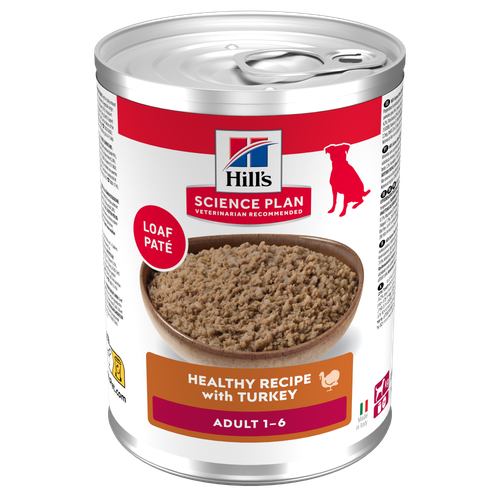
Hill's Science Plan Adult Wet Dog Food with Turkey is a complete premium pet food for adult dogs from 1 year. This deliciously smooth minced turkey loaf is formulated to deliver the appropriate amount of energy to support the needs of adult dogs.
Related articles

Dog obesity is a significant problem - learn more about helping your dog become trimmer and healthier through improved nutrition.
Discover the causes, signs, and treatments of kidney disease in dogs and find methods of supporting your dog's kidney health. Learn more at Hill's Pet.

Learn to see the signs of an upset stomach in your dog, understand the triggers and explore some possible solutions.

Gurgling tummies in turmoil are not good news for pets. Owners who have to clean up the unfortunate consequences, digestive problems are one of the rare downsides to owning a pet.

Put your dog on a diet without them knowing
Our low calorie formula helps you control your dog's weight. It's packed with high-quality protein for building lean muscles, and made with purposeful ingredients for a flavourful, nutritious meal. Clinically proven antioxidants, Vitamin C+E, help promote a healthy immune system.
Put your dog on a diet without them knowing
Our low calorie formula helps you control your dog's weight. It's packed with high-quality protein for building lean muscles, and made with purposeful ingredients for a flavourful, nutritious meal. Clinically proven antioxidants, Vitamin C+E, help promote a healthy immune system.

